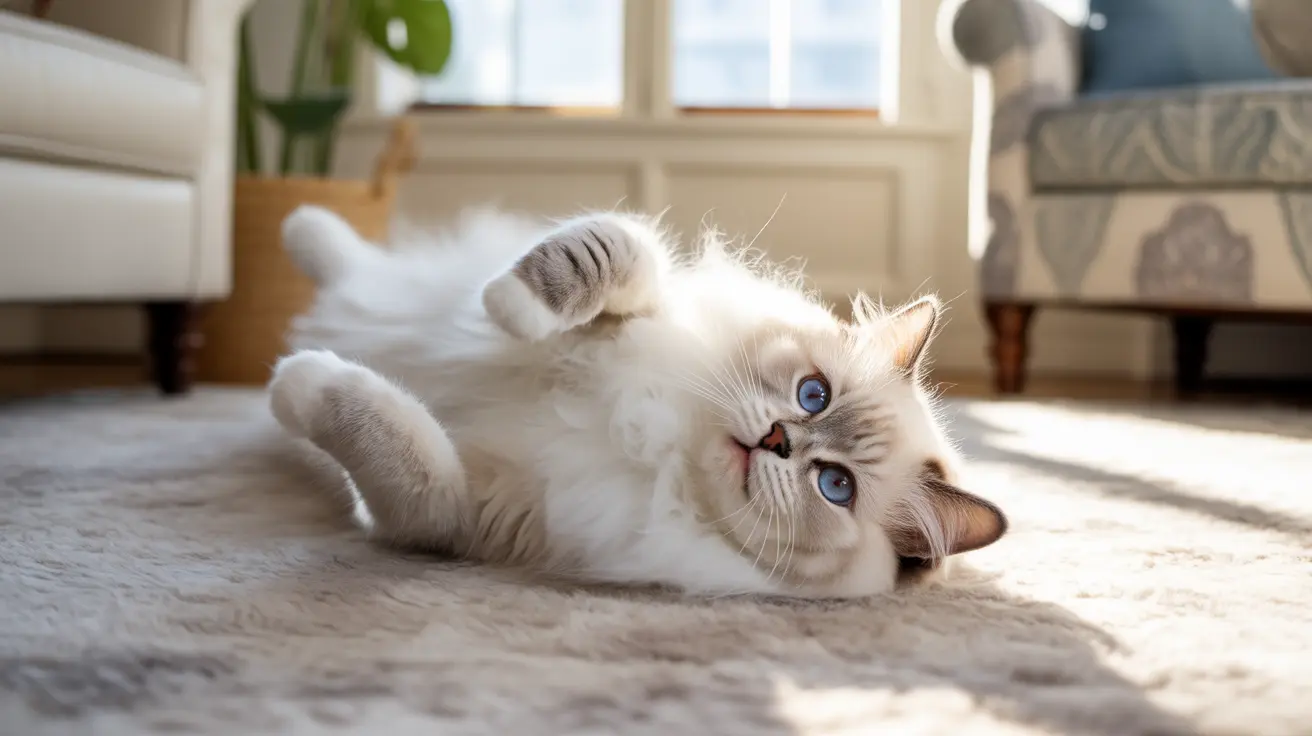The Science Behind Belly Rub Preferences
A cat's belly is an incredibly sensitive area, packed with nerve endings and protected by what veterinarians call the primordial pouch. This specialized anatomical feature makes some cats particularly responsive to touch in this region - whether positively or negatively.
From an evolutionary standpoint, exposing the belly is a significant display of trust, as this area houses vital organs and is naturally protected in the wild. When your cat willingly shows their belly, they're demonstrating a remarkable level of comfort with you.
Factors That Influence Belly Rub Enjoyment
Early Life Experiences
Cats who received gentle handling and positive belly touching experiences as kittens are more likely to enjoy belly rubs as adults. This early socialization plays a crucial role in determining their comfort level with human touch.
Individual Personality Traits
Just like humans, cats have unique personalities. Some naturally seek out physical affection, while others prefer less hands-on forms of interaction. This inherent temperament significantly influences their reaction to belly rubs.
Signs Your Cat Actually Enjoys Belly Rubs
Look for these positive indicators that suggest your cat genuinely enjoys belly rubs:
- Voluntarily exposing their belly in your presence
- Maintaining a relaxed posture during petting
- Purring and kneading while receiving belly rubs
- Seeking out more attention after the interaction
When Belly Rubs Are a No-Go
Watch for these warning signs that indicate your cat isn't comfortable with belly touches:
- Tail lashing or puffing up
- Dilated pupils
- Skin twitching or rippling
- Growling or hissing
- Quick transitions from relaxed to alert posture
Alternative Ways to Show Affection
If your cat doesn't enjoy belly rubs, try these cat-approved alternatives:
- Gentle chin scratches
- Head and cheek rubs
- Back scratches near the tail base
- Simply sitting together quietly
Frequently Asked Questions
Why does my cat expose their belly but not want belly rubs?
Belly exposure in cats is primarily a sign of trust and relaxation, not necessarily an invitation for touching. It's a vulnerable position that shows they feel safe in your presence, but many cats prefer to keep this sensitive area protected from physical contact.
What makes some cats enjoy belly rubs while others dislike them?
The difference largely stems from early socialization, individual temperament, and past experiences. Cats who received positive handling experiences as kittens and have naturally social personalities are more likely to enjoy belly rubs.
How can I tell if my cat likes or dislikes belly rubs from their body language?
Watch for relaxed body posture, purring, and maintained eye contact as positive signs. Negative signals include tail lashing, skin twitching, dilated pupils, or attempts to grab your hand with their paws.
Can I train my cat to tolerate or enjoy belly rubs safely?
While some cats can learn to accept belly rubs through gentle desensitization and positive reinforcement, it's important to respect their natural preferences. Never force physical contact, as this can damage trust.
Why is my cat's belly so sensitive to touch compared to other areas?
The belly contains numerous nerve endings and houses vital organs, making it naturally sensitive. This heightened sensitivity is an evolutionary protection mechanism that helps cats stay alert to potential threats in this vulnerable area.
Conclusion
Understanding why your cat likes (or dislikes) belly rubs helps strengthen your bond and respect their individual preferences. Remember that every cat is unique, and showing affection doesn't always require physical touch. The key is to pay attention to your cat's body language and honor their personal boundaries.






